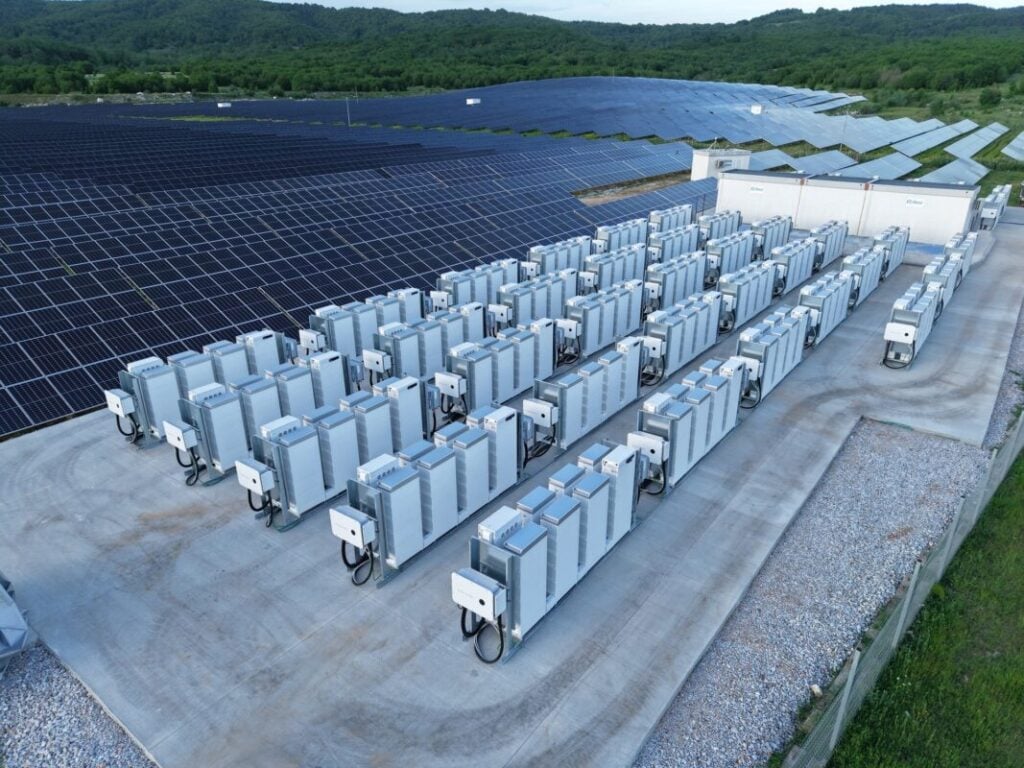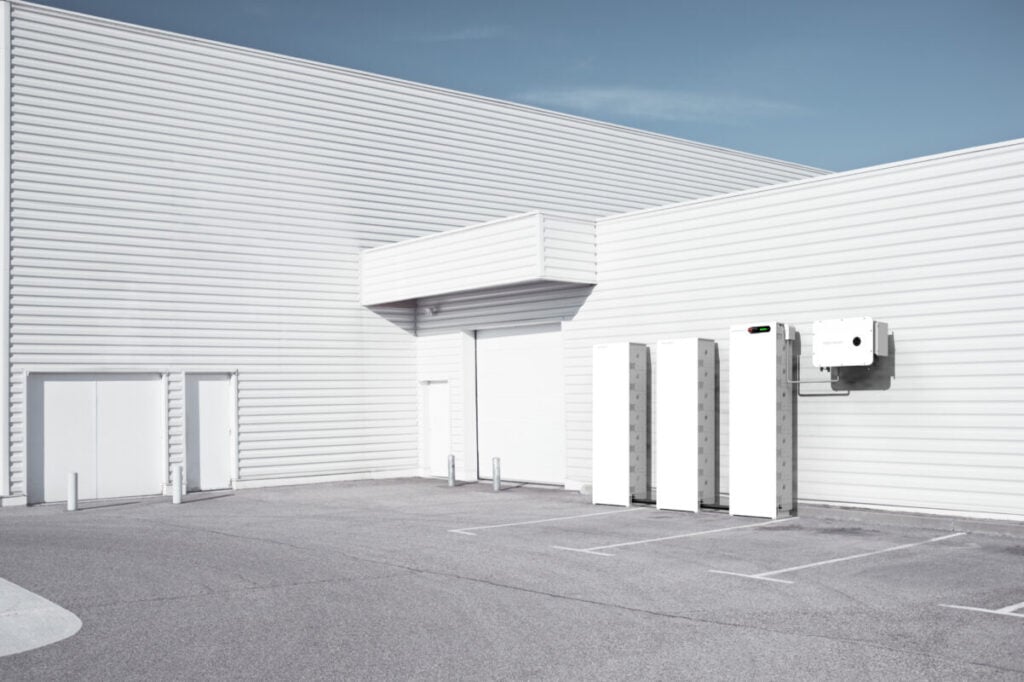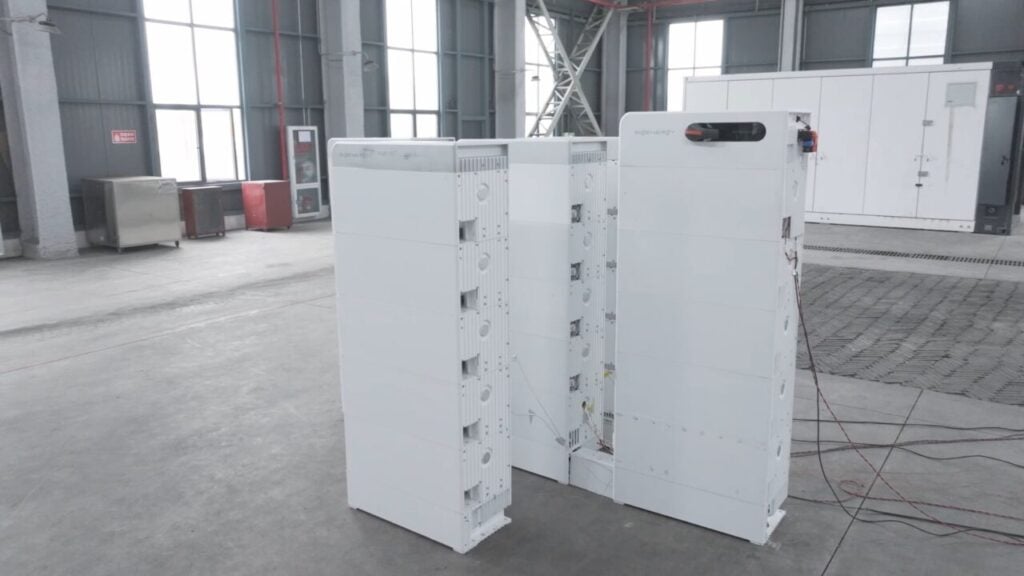
Commercial and industrial (C&I) energy storage can significantly lower electricity costs, increase efficiency, and aid decarbonisation, but customers’ safety concerns must be addressed.
Global energy storage hit record highs in 2024, with nearly 1TWh of new capacity expected annually by 2035.
China led with over 100GWh deployed, accounting for 62% of global additions, while the US and Europe each surpassed 10GWh, according to numbers from the China Energy Storage Alliance (CNESA), Wood Mackenzie, and Delta-EE, respectively. BloombergNEF forecasts a 14.7% CAGR through 2035, reaching 220GW/972GWh of annual additions.
Regional trends vary: utility-scale projects dominate in the US, Europe leads in residential adoption, and commercial & industrial (C&I) storage is surging worldwide. C&I systems—often installed behind the meter—help reduce energy costs, integrate onsite renewables, and boost resilience. In Q2 2025, US C&I deployments rose 36%, while Europe added 2.2GWh last year.
Challenges remain, from high upfront costs to recycling gaps, but technology continues to advance. As hardware, software, and safety measures improve, the industry is better positioned than ever to meet growing global demand.
Enjoy 12 months of exclusive analysis
- Regular insight and analysis of the industry’s biggest developments
- In-depth interviews with the industry’s leading figures
- Annual digital subscription to the PV Tech Power journal
- Discounts on Solar Media’s portfolio of events, in-person and virtual
Safety concerns as a major barrier to development
The critical safety risk for energy storage systems based on lithium-ion (Li-ion) batteries is thermal runaway. It occurs when the heat generated exceeds the heat dissipated, resulting in rapidly rising temperatures.
Thermal runaway can be caused by internal failure or external conditions. The good news is that the risk can be monitored, managed and minimised, including the threat of fire propagating, i.e., spreading, from one cell to its neighbours and into nearby enclosures and other equipment or structures.
Although the frequency of battery storage incidents has dropped sharply, with a 97% decrease from 2018 to 2023 and only one fire per roughly 35GWh deployed, safety remains in the spotlight. New York and California are introducing stricter regulations, while the European Association for Storage of Energy (EASE) is calling for cross-border coordination on standards and fire safety best practices.
The industry, meanwhile, has a responsibility to ensure that customers, communities, and local authorities can be certain that the systems deployed in their facilities or neighbourhoods are as safe as possible.
Alongside managing and minimising risks, it must also educate those stakeholders on the progress made and the industry’s commitment to safety.
Traditional designs of containerised solutions present challenges
C&I battery storage systems can often face challenging operating conditions, which can include elevated temperatures, exposure to dust and mechanical vibrations. They may often be installed alongside heavy industrial equipment.
Any shortcomings in critical aspects of their complex system design, such as cell quality consistency, ventilation, thermal management and fire protection systems, can lead to potential safety hazards. During operation, continuous monitoring of battery state-of-health (SoH), voltage balancing is essential, as is ongoing assessment of component replacement needs.
However, many energy storage systems available today fall short of mitigating the risks. Their shortcomings can be found in system and component-level design, cell warranties, fire protection features, energy management systems (EMS), and software strategies.
For instance, C&I systems typically follow a centralised, cabinet-based design, integrating battery modules, power conversion system (PCS), battery management system (BMS), fire protection and thermal management components into a single cabinet.
This integrated architecture has the disadvantage of placing all of the critical components within a single cabinet, which means the risk of a fire affecting them all is increased.
There is also not enough space left between the placement of battery clusters in cabinet-based designs, which can enable the rapid spread of fire.
Furthermore, fire suppression units are externally installed in cabinet-based designs, which limits their ability to quickly and effectively contain thermal incidents. They also often lack insulation between cells and metal enclosures, which can, over time, lead to short circuits and heat transfer as cell expansion causes direct contact.
Other limitations of common designs include a reliance on three layers of software-based protection and a lack of hardware redundancy. That means that the power circuit is left unprotected in the event of a software failure. The system could continue operating under abnormal conditions, leading to component damage and the increased risk of safety incidents.
Modular products can have a profound impact on the industry
New ways of thinking are emerging. Modular systems could mitigate or even eliminate the risks of fire spreading across an entire installation.
Where cabinet-based designs with centralised fire protection and delayed response times can be vulnerable to propagation risk, modular systems can take design in a fundamentally different direction.
Each battery pack can be equipped with its own fire protection system, with more layers of integrated safety features.
C&I and utility-scale markets are also converging in the sense that medium—to large-scale C&I projects are more common, with output in megawatts rather than kilowatts. Greater modularity enables scaling up of project sizes tailored to the customer’s needs.

SigenStack: New design principles overcome limitations of traditional approaches
Built to overcome the limitations of existing approaches, Sigenergy’s SigenStack features a modular, scalable design with six layers of integrated safety protection. SigenStack is designed specifically for C&I applications.
It overcomes or mitigates safety challenges that battery storage systems could face due to design choices and conventions at the system level.
For instance, SigenStack’s modular architecture includes independent fire protection for each 12kWh battery pack. The six layers of safety (sensors, active fire suppression modules, high-temperature insulation pads, thermal barriers, pressure relief valves and smoke detectors) enable close-range detection of thermal anomalies and rapid response.
Whereas the typical ratio of temperature sensors to cells is about 8-12 sensors per 52-60 battery cells per cabinet in traditional designs, SigenStack features 8 full-coverage temperature sensors for every 12 cells, greatly improving the comprehensiveness and accuracy of monitoring.
Sigenergy has also innovated in pack design. Traditional solutions also do not use heat insulation pads between cells, which allows for more heat transfer between them. The battery pack in SigenStack features ultra-low thermal conductivity (<0.02 W/m·K) insulation pads between cells.

This not only aids the flame-retardant, heat-insulating effects but also enhances electrical safety by providing relatively high impedance.
Similarly, many current energy storage system designs do not include pressure relief valves, as SigenStack does. This one-way exhaust device can quickly release internal combustible gases that can build up when thermal runaway occurs, preventing a thermal event from escalating into an explosion.
Each SigenStack battery pack, fitted with an integrated smoke detector, acts as an independent safety unit, enabling closer-range detection of thermal runaway and significantly enhancing response times versus the traditional cabinet-based system approach.
